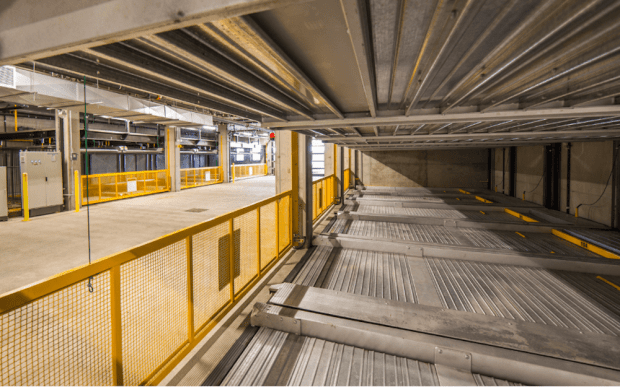Using Self-Service Retail To Solve City Parking

No one likes looking for parking.
It’s tedious, stressful and, while one is doing it, has the unfortunate quality of always taking forever.
For suburban and even exurban drivers, the hunt for a decent parking space is an occasional, if deeply irritating, part of life. For urban dwellers (or workers or visitors) — the search for parking is simply a constant and recurring misery.
Even more depressing, in urban areas, it more or less doesn’t matter if one scours the streets for a spot on a meter; or one decides to bite the bullet early on and pay for lot parking. No matter what one chooses, it will take forever. The best you can say is it takes somewhat less time to find a spot in the average paid lot, but still much, much longer than anyone actually wants to spend.
And, incidentally, that feeling most people have that they’ve spent far too much of their life searching for a parking spot is not entirely in their heads.
According to recent data from Research and Markets, drivers searching for vacant parking spaces account for nearly 40 percent of the total traffic congestion in most urban areas. According to a 2017 study by INTRIX, the average German driver spends a little under two days (41 hours) looking for parking. The average American drives 30 percent more often than the average German, so it stands to reason Americans are losing more time hunting for parking spaces.
And while urban parking is clearly a cost to consumers’ happiness, and has connected environmental costs with all the extraneous emissions it brings, parking is also a major headwind to urban economies. It’s a reality that CityLift Parking co-founder and CEO Scott Gable found himself confronting again and again in his previous life as a real estate developer.
“Five years ago, we determined that one of the biggest limitations to new construction in the U.S. was the amount of space required to meet the parking needs for new buildings,” Gable explained to INC.
While parking lots may not look like much, they are expensive to build. The average price per new spot added in the U.S. is a little under $20,000 — and that average goes up considerably in places like San Francisco and Manhattan.
CityLift Parking looks to replace the expensive square footage of heavy parking structures of the past with compact, automated parking towers that use a series of sensors and lifts to efficiently pack cars into more compact spaces.
For drivers using the system, parking becomes a matter of driving in, leaving their cars in ground-floor bays and paying via tap screen. Once the transaction is complete — the automation does the driving, so to speak, and moves the car around like a tetris block horizontally and vertically until it finds the right place to slot it into.
CityLift’s garages come in four styles, the use of which is dictated by the size and shape of the construction needs: tower, puzzle, aisle and stacker.
Automated parking is uncommon in the United States — although it has taken hold in both Asia and Europe. According to Research and Markets data, the automated parking system market will be worth $1.3 billion by the end of this year.
And while the product is making progress in the U.S., Gable noted that even with interest increasing as cities nationwide are looking to fix their parking problems, automated parking towers are not exactly the kinds of structures one can throw up overnight.
“It can be three or four years from the initial sale until we actually sign a contract, and then another couple of years before we get the project built,” Gable said.
Moreover, selling Americans on the idea of automated parking structures is, at times, slow going. For all the myriad problems of manually parking one’s car — it is a fairly safe and stable process. Lifts are by-and-large very safe, but as an automated parking garage lift failure in Brooklyn demonstrated earlier this year, when automated parking goes wrong, one can end up with a destroyed car or two on their hands. (The automated garage was not a CityLift design.)
Ultimately, Gable noted, while failure can happen, CityLift is always working to build better failsafes so malfunctions don’t have to be catastrophic when they inevitably happen. Moreover, he noted, occasional harm is attention-grabbing, but the harms in the current system are chronic. Parking is expensive to create, produces smog, and holds back all kinds of growth and development in urban areas.
“It is not an overnight solution,” Gable told PYMNTS. “But it is the solution that, over time, we believe will let cities start reclaiming a lot of wasted blacktop.”
